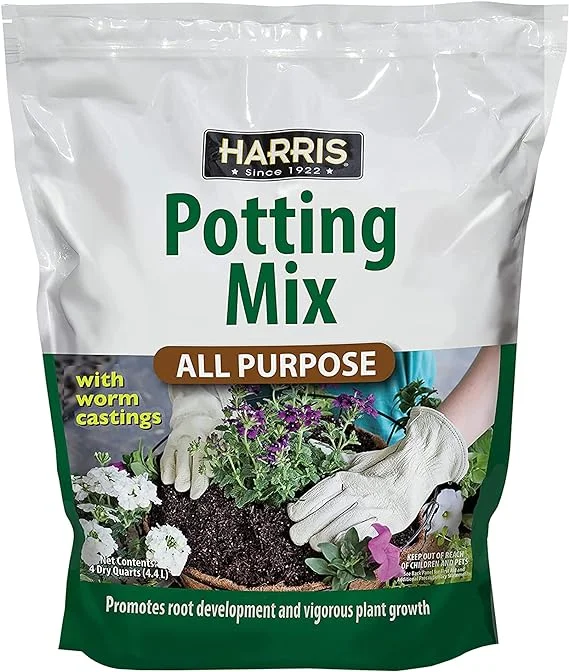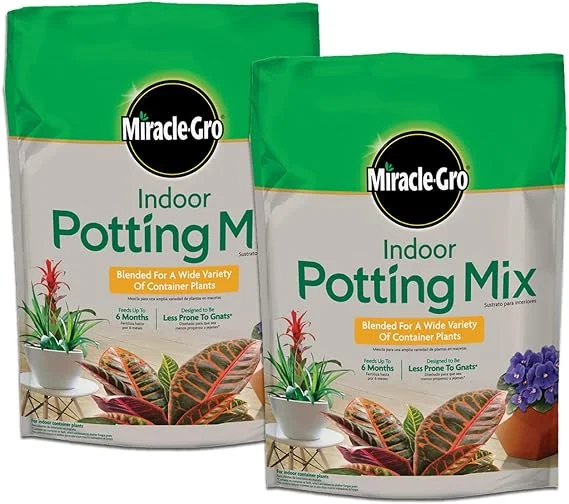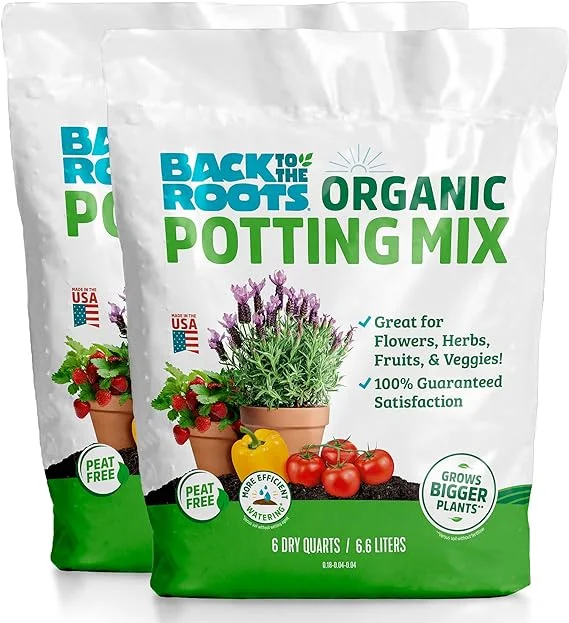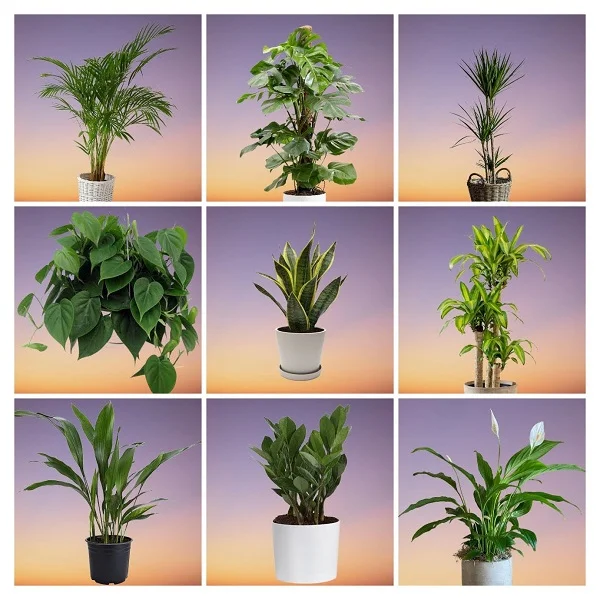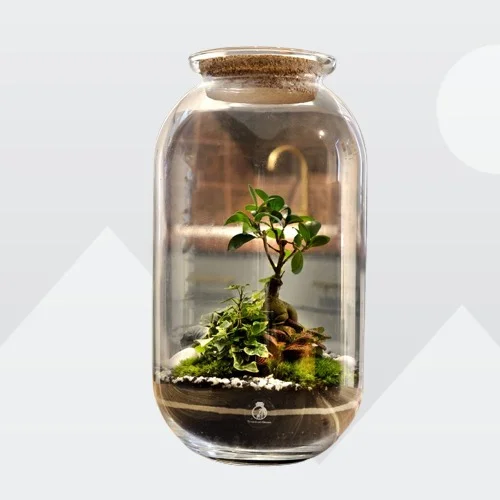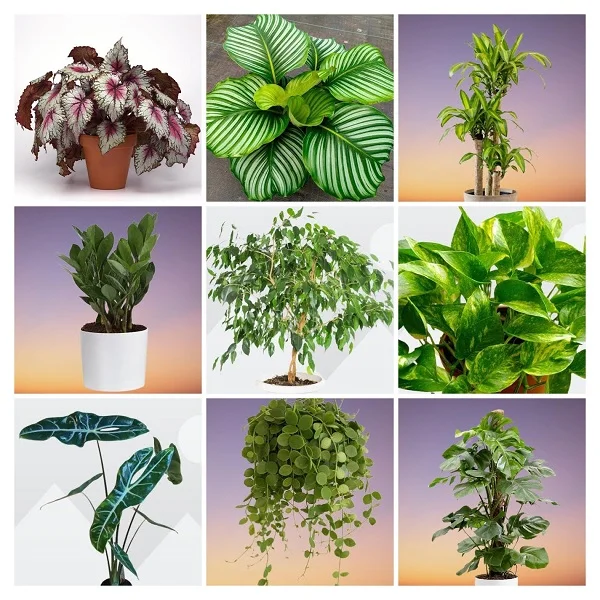Parlour Palm (Chamaedorea elegans) Indoor Care and Common Problems with Solutions
Some links in this post may be affiliate links
Parlour Palm (Chamaedorea elegans) prospers in bright indirect light away from direct sunlight, average warmth, moderate humidity and moderately moist, rich, well-drained, all purpose potting soil coupled with monthly feeding in the growing season.
Chamaedorea elegans is one of the popular palms that easily adapts to indoor growing conditions and is perfect for the low-light limited spaces.
Parlour Palm has a high tolerance for low light and artificial light. However, it prefers bright indirect light, rich well-drained soils and warm temperatures to flourish.
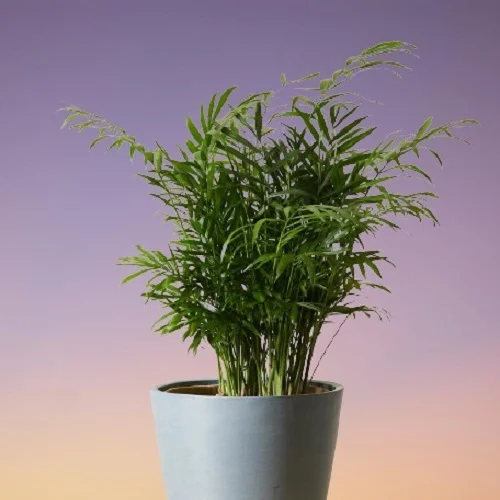
Botanical name: Chamaedorea elegans
Family: Arecaceae
Sufamily: Arecoideae
Common name: Parlour Palm
Origin
Chamaedorea elegans is native to the dense forests of Guatemala and Southern Mexico an environment that is consistently warm and humid. On account of its require
Size
Parlour Palm is generally a short palm which grows slowly to reach a height of 2 feet when grown indoors but in the wild it can grow to 8 feet. On account of its small size, Chamaedorea elegans is one of the best plants for the limited spaces in the home or office.
Flower
Chamaedorea elegans also produces tiny yellow flowers and small fruits, once grown and mature if grown under good light.
Air Cleaning
According to the NASA Clean Air Study, Chamaedorea elegans among the best air-cleaning plants which removes xylene, toulene, benzene, formaldehyde, trichloethylene and ammonia from indoor air. This coupled with its compact size place this palm among the best plants for a study table to boost concentration and is also one of the best plants for an office desk without sunlight.
Toxicity
The foliage of Parlour Palm is non-toxic but the fruits (berries) are highly poisonous to both humans and pets as indicated by the American Society for the Prevention of Cruelty to Animals. Therefore, it is important to prevent flowering by removing the flower stalks when they begin to form.
Related Plants
Chamaedorea elegans is closely related to Chamaedorea seifrizii (Reed Palm) and Chamaedorea erumpens (Bamboo Palm) and are grouped together under the common name, 'Bamboo Palms'.
Where to Buy
If you are looking to add Parlour Palm to your collection, they are readily available online on Etsy (Link to Etsy).
Parlour Palm Care Indoors
Parlour Palm (Chamaedorea elegans) blossoms in bright indirect light, average warmth of 15-280C, moderate humidity of 50-55% and moderately moist, fertile, well-drained, all purpose potting soil coupled with monthly feeding during the growing season.
Chamaedorea elegans requires repotting at the beginning of the growing season only when the palm has become pot-bound. Pruning is needed to keep the palm neat as well as reduce pests and diseases. Keep reading for more on the best growing conditions for Parlour Palm and how to achieve them.
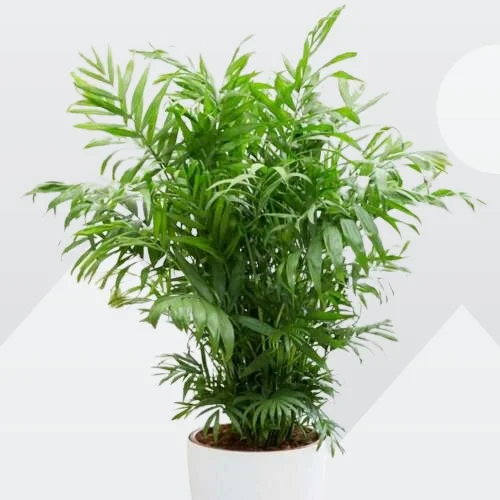
Watering
Water Parlour Palm liberally during the growing season and allow the top 2-3 inches of soil to dry out between waterings to keep the soil moderately moist.
Decrease watering in the cold season as growth is minimal at this time to maintain the soil slightly moist but do not let it dry out completely.
Use chlorine-free water as like all palms, Parlour Palm is sensitive to chlorine and other chemicals dissolved in water. Do not allow the palm to sit in soggy soil as it can lead to root-rot and the death of the palm.
Light Requirements
Chamaedorea elegans grows best in bright indirect light but it can tolerate some shade but the growth will be much slower. Keep it away from direct sunlight as it can cause scorching which results in brown marks on the leaves.
You may grow Parlour Palm under grow lights if the natural lighting is not adequate. Take a look these full spectrum grow lights on Amazon.
Regularly rotate the pot to ensure that the palm receives adequate light on all sides for even growth and prevent lop-sided growth.
Temperature and Humidity
Chamaedorea elegans requires an average warmth of 15-280C to thrive. If the temperature is comfortable for you is ideal for the palm. Keep it away from cold drafts as it cannot tolerate cold temperatures which cause brown leaf tips and spots.
Parlour Palm has no need for high humidity. Average room humidity of 50-55% is ideal for the palm. However, when the indoor temperatures are very high, set the pot on a wet pebble tray to increase humidity. Owing to its small size, you may also grow Parlour Palm in a terrarium. Check out these techniques on how to elevate humidity for houseplants.
Occasionally clean the mature leaves (fronds) by damp-wiping with a soft cloth or wash it under a high pressure hose to get rid of the dust as well as discourage pest and disease infestations.
Potting Mix
The best potting mix for Chamaoderea elegans should be rich in organic matter and free-draining to prevent it from getting soggy while providing the required nutrients. Most all purpose potting mixes are ideal for this palm.
Fertilizer
Feed Chamaedorea elegans with a balanced, liquid fertilizer every 3-4 weeks during the growing period for a lush growth. Withhold feeding in the cold season as growth is minimal at this time and therefore the plant does not need it.
Once in a while flush out accumulated salts from the soil by running a stream of water through the soil until it comes out through the drainage holes. Let the stream run for several minutes and repeat several times.
Repotting
Repot Parlour Palm at the beginning of the growing season only when the palm has become pot-bound as it does not like root disturbance.
Use a pot 1-2 sizes larger than the current one. Ensure that the pot has a drainage hole to prevent the soil from getting soggy as it can lead to root-rot disease and the eventual death of the palm. Check out these ceramic pots with drainage holes on Amazon.
Pruning
Pruning Parlour Palm is easy. Cut away the old brown and dry fronds near the soil surface to maintain the plant neat and also minimize pest and disease infestations. Do not cut away any leaf with green in it as it continues to supply nutrients to the palm.
If the seeds are required for propagation, allow the fruits to mature and drop then cut away the spent flower stalk. Where the seeds are not required, cut away the flower stalk immediately to prevent the palm from wasting energy on developing the flowers and seeds.
Propagation
Parlour Palm (Chamaedorea elegans) propagation can be done during the growing season when the plant is actively growing by plant division, offshoots, or seeds.
How to propagate Parlour Palm by plant division
During repotting, divide the Parlour Palm into sections and plant the sections in individual pots.
Place the pots in a warm, well-lit place away from direct sunlight.
Maintain the soil moist until new growth emerges and the new Parlour Palm is well established.
How to propagate Parlour Palm from offshoots
With a sharp sterilized knife or scissors, carefully cut the Parlour Palm offshoot from the mother plant.
Ensure that the offshoot has adequate roots before seperating it from the mother.
Pot the offshoot in its own pot, place in a warm, brightly lit place away from direct sunlight and maintain the soil moist through out.
Allow the offshoot to be well established before transplanting after which you can begin routine care.
How to propagate Parlour Palm from seeds
Parlour Palm seed germination is difficult and may take up to 4-6 months. Sow the seeds in moist soil and place in a warm place at about 300C.
Keep the soil moist through out the period until germination of the seeds takes place.
Lower the temperature slightly after germination and maintain the soil moist until the new Parlour Palms are well established.
Related: How to propagate Reed Palm (Chamaedorea seifrizii).
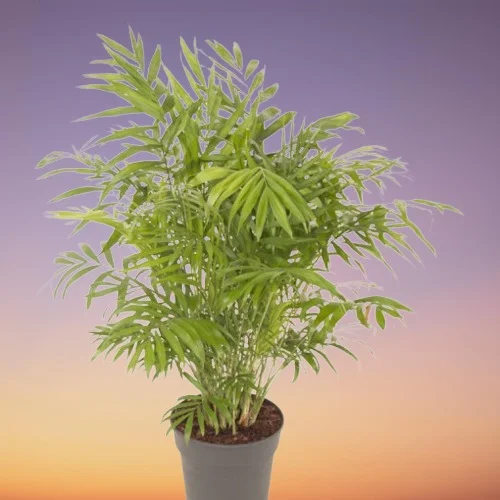
Parlour Palm Common Problems
Parlour Palm (Chamaedorea elegans) growing problems include leaf spots, brown leaf tips, yellowing fronds, browning fronds, pests and diseases. Keep reading for more on these problems, their remedies and solutions.
Browning fronds
The lower fronds in Parlour Palm may turn brown and droop due to age; remove them by cutting with a sharp knife or pair of scissors and not by pulling to avoid unnecessary injuries.
If the browning of the fronds is general and accompanied by rotting, the reason is root-rot disease which is enhanced by soggy soil due to poor soil drainage. Make sure that the pot has a drainage hole and the soil is free-draining to prevent it from getting soggy. Read more on how to treat root-rot in houseplants.
Pests
The common pests in Parlour Palm are spider mites, scales and mealy bugs. Regularly check underneath the leaves for these pests and keep the palm properly pruned to discourage their infestation. Isolate the affected palm to prevent spread to the other houseplants and treat it appropriately for the pests. Read on how to identify and get rid of pests in houseplants.
Brown leaf tips
There are four possible reasons for brown leaf tips in Parlour Palm. Trim off the brown tips with sterilized scissors. One possible reason for brown leaf tips is dry air (low humidity). To raise humidity, set the pot on a wet pebble tray or use a cool mist humidifier.
The second possible reason for brown leaf tips in Parlour Palm is underwatering. Keep the soil moderately moist at all times during the growing season. Reduce watering during the cold season to keep the soil slightly moist but do not allow it to dry out completely. Learn more on how to water indoor plants the right way.
The third possible reason for brown leaf tips in Parlour Palm is cold drafts like windy doors and windows, air conditioning units among others. Keep the palm away from drafts to maintain an average warmth of 15-280C with a minimum of 120C. Check out this guide on understanding temperature for houseplants.
The fourth possible reason for brown leaf tips in Parlour Palm is damage by touching. Place the palm away from the line of traffic.
Yellowing fronds
Yellowing fronds in Parlour Palm are due to underwatering. Water the palm liberally until water comes out through the drainage holes during the growing season. Lessen watering in the cold season to maintain the soil slightly moist but do not allow the soil to dry out completely.
Brown leaf spots
There are two possible causes of brown leaf spots in Parlour Palm. Remove the affected leaves and discard. One cause of brown leaf spots is overwatering. Keep the soil moderately moist during the growing season but not soggy. Ensure that the pot has a drainage hole and the soil is free-draining to prevent it from getting soggy.
The second cause of brown leaf spots in Parlour Palm is sudden decrease of temperature due to cold drafts. Keep the palm from cold drafts to maintain an average warmth of 15-280C with a minimum of 120C.
Related: Bamboo Palm Common Problems Indoors and How to Fix Them
You liked it? Share on social media.
Related Content
Amazon Associates Disclosure
Homeplantsguide.com is a participant in the Amazon Services LLC Associates Program, an affiliate advertising program designed to provide a means for sites to earn advertising fees by advertising and linking to amazon.com.
